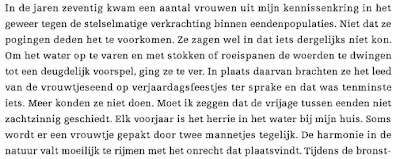How to use distant landmarks
Every walker has noticed distant landmarks. Anything can be used as a distant landmark: church towers are classic triangulation and orientation points but modern wind turbines, windmills, office blocks, microwave relay towers, transmission line towers and even trees can be used as landmarks. The landmarks need not be permanent - even a column of smoke is useful and welcome.
But does every walker know how to use a landmark correctly? How to use it for more than orientation? How to use it for psychogeography?
Horizon - A landmark can be used to mark your horizon. You can see the landmark from afar. You may see it many times during your walks. You may get to know it intimately. But still - you can never see all your landmarks up close.
Some landmarks - even most of them - will stay forever out of reach. You can look at them longingly from the distance but you will never touch them. This could make you sad - but it can also make you happy.
Be happy that at least you could see the landmark from the distance - you might not have seen and known it at all. Be thankful for the horizon and the discoveries it promises - and be thankful for the discoveries it hides.
The other side - Often you see the landmark from one side only. Your daily commute leads you past a prominent landmark but you never have time to explore it. Does it really have another side? Could other people see the other side? What is behind the landmark? What does it hide?
Make a decision now - explore or speculate? Destroy the mystery or leave it intact?
If the landmark is on your horizon you will have to walk far to see the other side. Walking far is good - but there will always be other sides that you wil never get to see. This could make you sad - but it can also make you happy.
Be happy that there are still some mysteries in this modern scientific world. Be thankful for the small revelations and mythologies - be thankful for the monsters in the white spots of your personal map.
Changes - Observe how the landmark changes as you move through space and time. Or how it does not change. Usually you travel faster than the landmark. Usually you change much faster than the landmark. This could make you sad - but it can also make you happy.
Be happy with the islands of stability in this unstable world. Be happy if the landmark will survive you - you share in its eternity. (Church towers are especially useful for this purpose.)
Background - Notice how the landmark stands out from the background. Look, think, analyze. What makes the landmark different from the background? Then notice yourself. Look, think, analyze. Probably you don't stand out against your background - at least not as much as the landmark. This could make you sad - but it can also make you happy.
Be happy with the role of observer - as part of the background you go unnoticed, you can see things that other people overlook. Be thankful that you can save your energy - being a landmark is a tiresome business.































